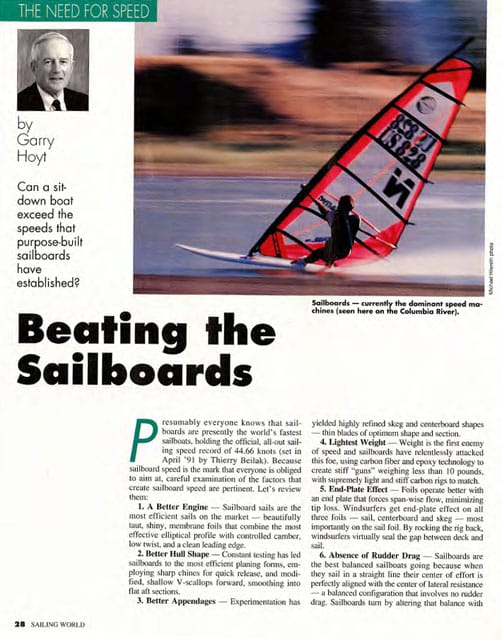
Windsurfing 1994 article
Presumably everyone knows that sailboards are presently the world’s fastest sailboats, holding the official, all-out sailing speed record of 44.66 knots (set in April ’91 by Thierry Beilak). Because sailboard speed is the mark that everyone is obliged to aim at, careful examination of the factors that create sailboard speed are pertinent. Let’s review them:
1. A Better Engine — Sailboard sails are the most efficient sails on the market—beautifully taut, shiny, membrane foils that combine the most effective elliptical profile with controlled camber, low twist, and a clean leading edge.
2. Better Hull Shape — Constant testing has led sailboards to the most efficient planing forms, employing sharp chines for quick release, and a modified, shallow V-scallops forward, smoothing into flat aft sections.
3. Better Appendages — Experimentation has yielded highly refined skeg and centerboard shapes—thin blades of optimum shape and section.
4. Lightest Weight — Weight is the first enemy of speed and sailboards have relentlessly attacked this foe, using carbon fiber and epoxy technology to create stiff “guns” weighing less than 10 pounds, with supremely light and stiff carbon rigs to match.
5. End-Plate Effect — Foils operate better with an end plate that forces span-wise flow, minimizing tip loss. Windsurfers get end-plate effect on all three foils—sail, centerboard and skeg—most importantly on the sail foil. By rocking the rig back, windsurferes virtually seal the gap between the deck and sail.









